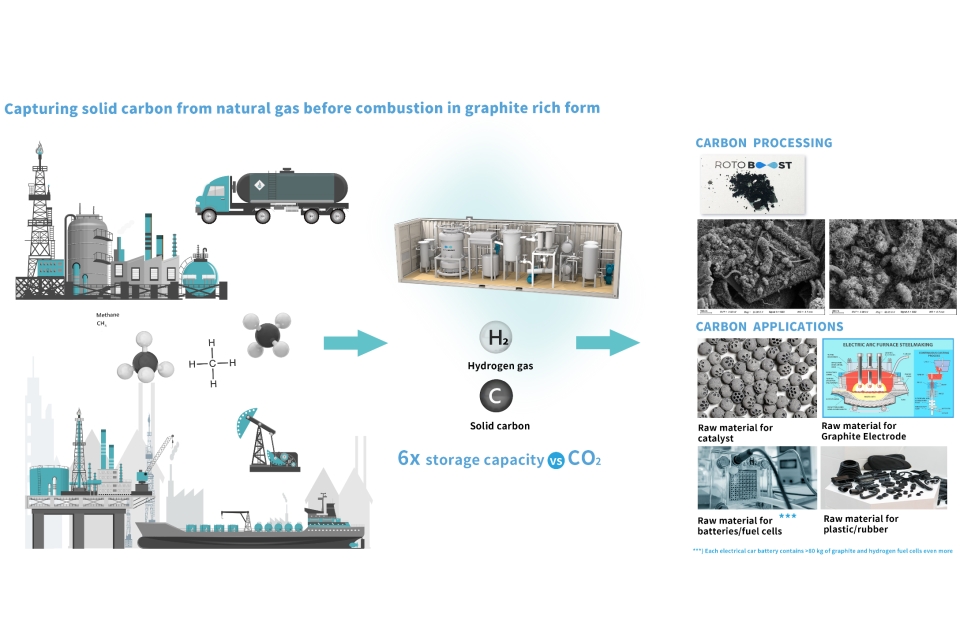Lloyd’s Register has awarded approval in principle (AiP) to Rotoboost, a Nordic hydrogen production company, for its pre-combustion Carbon Capture System (CCS) Rotobox. The system uses thermocatalytic decomposition on ships, which converts natural gas into hydrogen and solid carbon prior to combustion.
The thermocatalytic decomposition process (TCD) applies a liquid catalyst to convert part of the natural gas supply into hydrogen and graphite. This process significantly reduces CO2 emissions, particulate matter and methane slip by producing hydrogen while capturing carbon in its solid form.
Rotobox has the capacity to reduce overall carbon emissions by up to 100 per cent, depending on the heating method used. Converted hydrogen from the CCS can be used for fuel cells or as blend-in fuel for combustion engines or gas-fired boilers.
Also read: Rotoboost develops pre-combustion carbon capture system for ships
Scalable solution
Rotoboost’s solution is easily scalable to meet future emission regulations, with lower electrical power requirements compared to conventional carbon capture systems and less storage space needed for solid carbon, allowing the system and associated storage to remain compact even for long voyages. The system is well suited to LNG carriers and other LNG-fuelled vessels, offering an additional option for shipowners for decarbonising.
The AiP validates Rotoboost’s CCS system as compliant with Lloyd Register’s goal-based and comprehensive prescriptive requirements, marking a further milestone in the development of carbon capture technology.
‘I believe that the decarbonisation of shipping starts now, and we need to find solutions that reduce emissions today,’ says Andy McKeran, Lloyd’s Register Chief Commercial Officer. ‘Therefore, I am pleased to award the AiP to Rotoboost for their innovative carbon capture system. Solving the methane emissions perception in the industry, through technology and evidence enables LNG to become a future fuel that is readily available today, subject to affordability – which ranks higher than any other alleged lower emissions fuel available today.’
Circular economy
Kaisa Nikulainen, Rotoboost CEO, adds: ‘We are delighted to present the shipping industry with a novel approach to tackle emissions without compromising cargo efficiency and overall economy. Our technology introduces a new perspective on fossil fuels, demonstrating how they can be equally green when used innovatively. In addition to hydrogen as a green blend-in fuel, our byproduct, pyrolytic graphite, is also an excellent battery-grade anode material for electric cars and green steel production. This circular economy creates a powerful tool to combat global warming and climate change on both land and sea. Our technology also demonstrates great potential in cost-effective production of green methanol and ammonia in land-based facilities, which further provides the shipping industry with other affordable alternative fuel options.’
Picture by Rotoboost.
Also read: GCMD plans to study offloading of shipboard captured CO2








